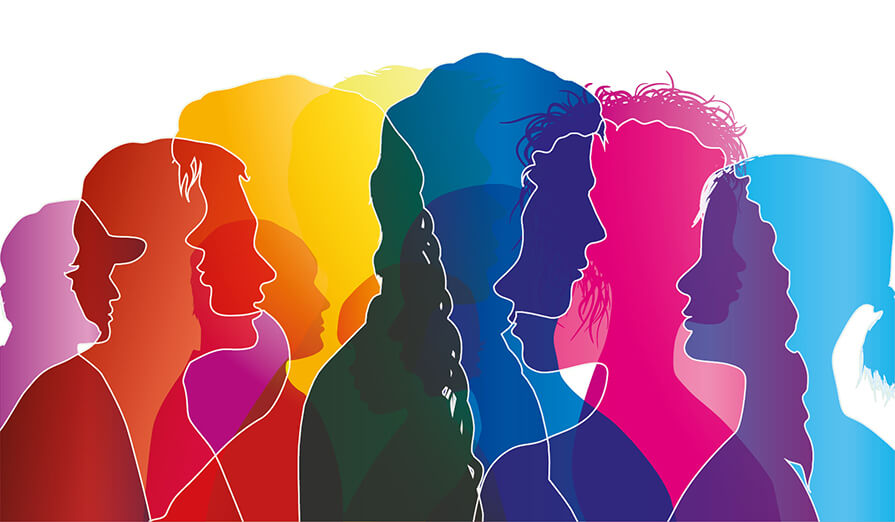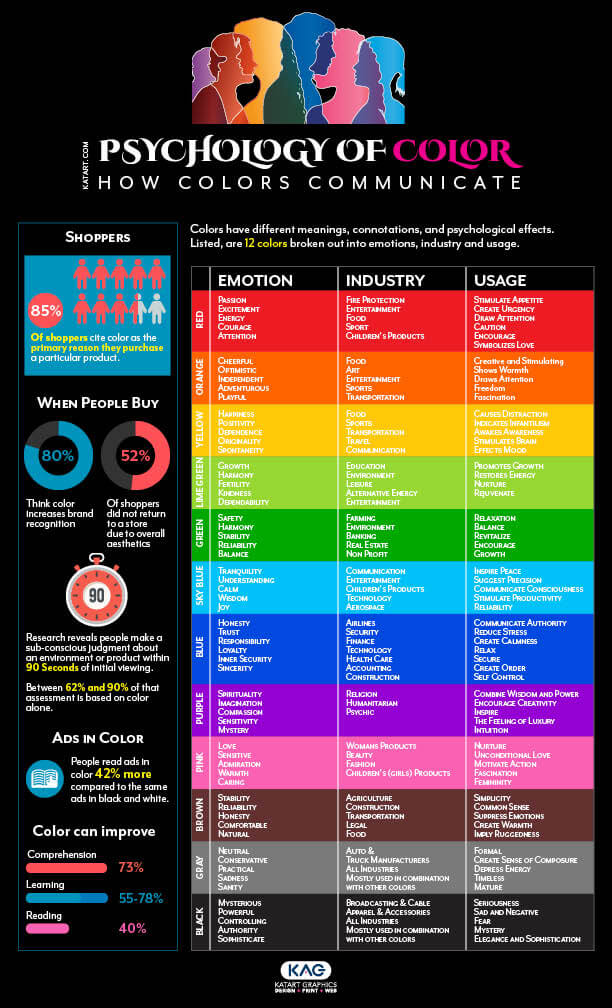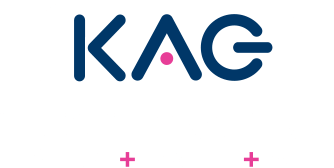
The psychology of color in marketing directly plays into consumer behavior. Nearly 85% of consumers name color as the primary reason that they purchase a particular product. 93% look at visual appearance when they buy a product and color improves comprehension, learning, and readability.
Colors have different meanings, connotations, and emotional effects. In one study, Rose H. Alschuler and Berta Weiss Hattwick took drawings of children to determine color effects. They concluded that blue implied self-control and repression of emotions; red was an uninhibited expression; yellow indicated infantilism and dependence; and green showed balance, few emotional impulses and a simple nature.
Here are a few more interesting facts about the psychology of color in shoppers purchase decisions:
- People read ads in color 42% more compared to the same ads in black and white.
- Besides the brand symbol, color is the second element in identifying packaging in the whole world.
- Color can improve comprehension by 73 percent, learning by 55 – 78% and reading by 40%.
- 80% of consumers think color increase brand recognition.
Likewise, Research reveals people make a sub-conscious judgment about an environment or product within 90 Seconds of initial viewing. Between 62% and 90% of that assessment is based on color alone.
If you are creating a new company, campaign, or product you’ll want to focus on choosing colors that support your brand’s “personality,” in order to bring in the right consumers to your business. (Click to see some example work of KatArt’s clients).
Your branding will be much more compelling by choosing the right colors. But with so many colors to choose from, how do you know which colors are right for your brand. Below is a psychology of color chart to help you with those choices.



